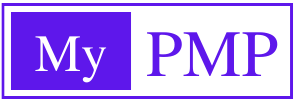Crystal Family of Methods
Alistair Cockburn came up with a set of agile software development methods called the “Crystal family of methods” for project management. These methods are made to be easy to use, flexible, and fit the needs of a particular job.
The Crystal family of methods stress how important people, dialogue, and working together are to the success of a project. They know that different projects have different levels of difficulty, different team sizes, and different environmental factors, so they need different ways of managing projects.
Some of the most important ideas behind the Crystal family of methods are:
1. Focused on people: The methods give the most weight to how project team members talk to each other and work together. They stress how important it is to give people the power to make decisions and to encourage good communication and teamwork.
2. Incremental and iterative: Projects are broken up into smaller parts, or iterations, so that comments and changes can be made all the time. This method makes it easier to get useful features out early and lets the project team adapt to changing needs.
3. Reflective Improvement: The methods urge people to think about and learn from their experiences often. Teams are urged to look at how well they did, figure out where they could do better, and make the necessary changes to improve the results of the project.
4. Fits the project: The Crystal methods know that one size doesn’t fit all projects. They provide a structure that can be changed to fit the specifics of the project, such as the size of the team, the complexity of the project, and the resources that are available.
Continuous Delivery: The goal of these methods is to give customers or other users working software on a regular basis. This iterative delivery method makes feedback faster, lowers the risks that come with long development cycles, and makes it easier to test the product early on.
Different methods, such as Crystal Clear, Crystal Yellow, Crystal Orange, Crystal Red, and so on, are part of the Crystal family of methods. Each method is made for a certain size and amount of complexity of a project. For instance, Crystal Clear is for small teams working on projects that aren’t too complicated, while Crystal Orange is better for bigger teams working on projects that are more complicated.
These methods encourage flexibility and adaptation, so project managers and teams can change how they work based on how their projects are different. The Crystal family of methods tries to improve project results and customer satisfaction by putting an emphasis on collaboration, communication, and growth in small steps.






